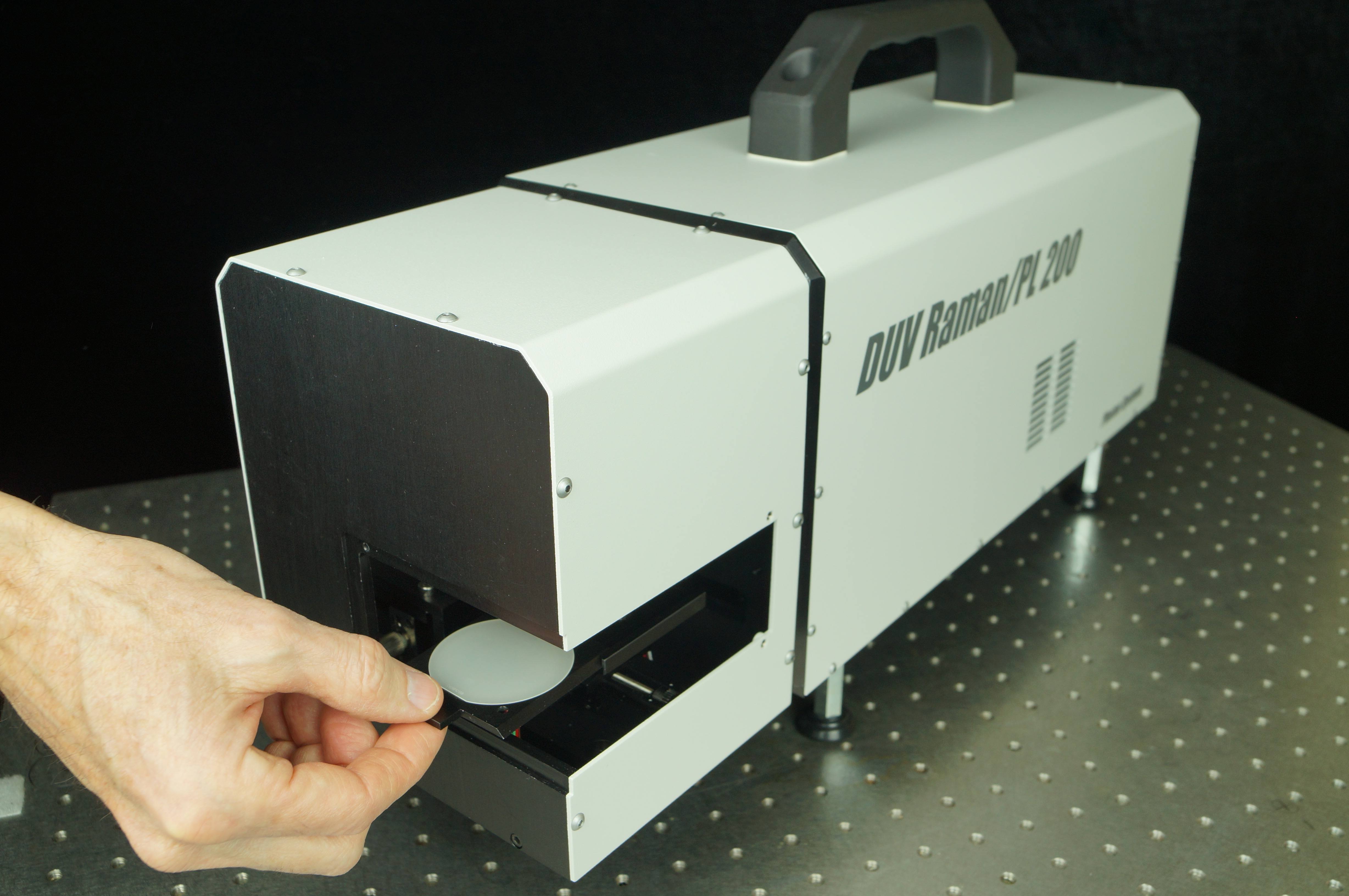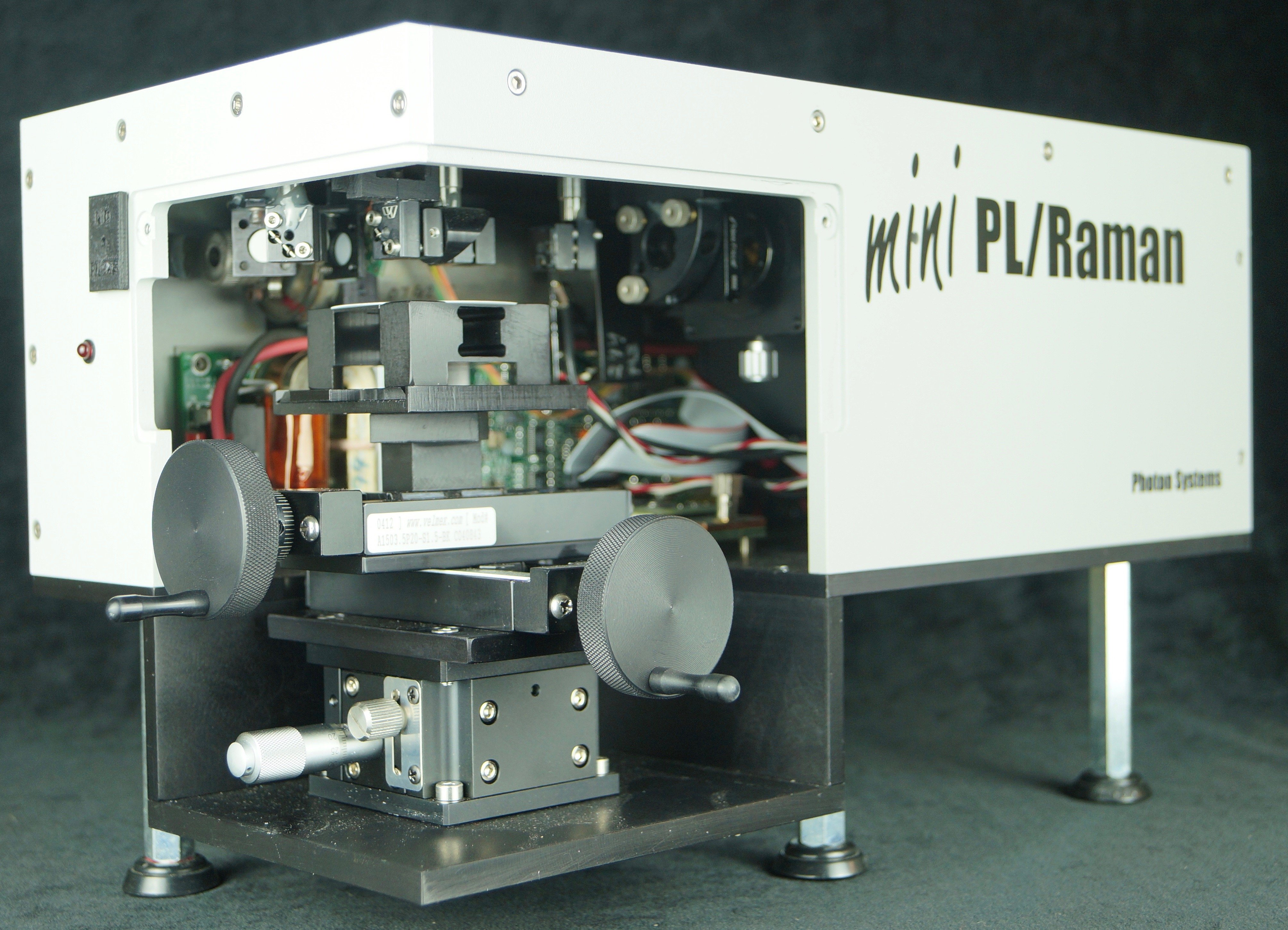Deep UV excited Raman & photoluminescence spectroscopy is an emerging analytical instrument technology with vast potential for a wide range of commercial, industrial, and research applications. A major limitation of Raman spectroscopy conducted in the near UV, visible, or near IR is obscuration or interference of the Raman signals due to background fluorescence from the analyte or its background or surroundings within the laser beam interrogation spot. This interference limits the types of materials and compositions or backgrounds for which Raman spectroscopy is useful.
Autofluorescence is a phenomenon which does not occur below about 270 nm for the vast majority of materials, independent of excitation wavelength. Raman, on the other hand, is dependent on excitation wavelength and when excitation occurs below 250 nm, there exists a spectral region within which to observe over 3000 cm-1 of Raman shifted emissions without obscuration or interference from fluorescence.
This is the driving motivation for spectroscopy conducted in the deep UV with excitation below 250 nm. Additionally, operation in the deep UV enables simultaneous detection of Raman and fluorescence spectra, enabling the much higher sensitivity of fluorescence and the higher specificity of Raman spectra. There are many other advantages of operation in the deep UV including enhanced Raman signal strength due to resonance effects, simplification of Raman spectra for resonant materials making spectra easier to interpret, small depth of penetration into many materials, which limits interference with background or substrate materials, and other benefits.
Deep UV resonance Raman & photoluminescence spectroscopy has been hampered by the lack of a suitable laser source in the deep UV. Photon Systems has developed a new enabling laser technology to address this problem. These lasers have exceptionally narrow and stable emission linewidths and are hundreds of times smaller, lighter, and lower power consumption that other deep UV lasers. Photon Systems lasers have been vetted in a wide range of harsh commercial, industrial, and research and have been selected by NASA in 2014 for the next Mars lander mission for a rover arm mounted deep UV Raman and fluorescence instrument.
Photon Systems’ laboratory spectrometer systems enable measuring Rayleigh, Raman, and fluorescence and phosphorescence emissions from trace materials on surfaces and in liquids. The spectrometers are offered in two different versions with different capabilities. These systems incorporate the patented Photon Systems deep UV hollow cathode lasers and matched gated boxcar integrators, which are the key to their outstanding performance, compact size and affordable price.

Key Features
Deep UV Excitation
These systems are designed around the unique Photon Systems hollow cathode Deep UV lasers with output at 224nm or 248.6nm.
Compact
Less than 20 inches long, so they can fit into any lab.
Low Power Consumption
Unlike most deep UV systems, these are very efficient and require less than 60 watts. The DUV Raman/PL 200 can even run off a 24VDC battery pack.
LabView
LabView interface and control of laser, spectrograph, PMT and spectral data
Downloads
Mini PL 110
The most compact and lowest cost deep UV (224nm or 248.6nm) photoluminescence spectrometer system.
DUV Raman PL 200
A fully integrated lab model deep UV resonance Raman and photoluminescence spectrometer with microscopic imaging.
Get In Touch
Keep informed about the latest deep UV developments at Photon Systems by joining our mailing list.
ADDRESS
1512 Industrial Park St. Covina, CA 91722-3417
PHONE
626 967-6431


